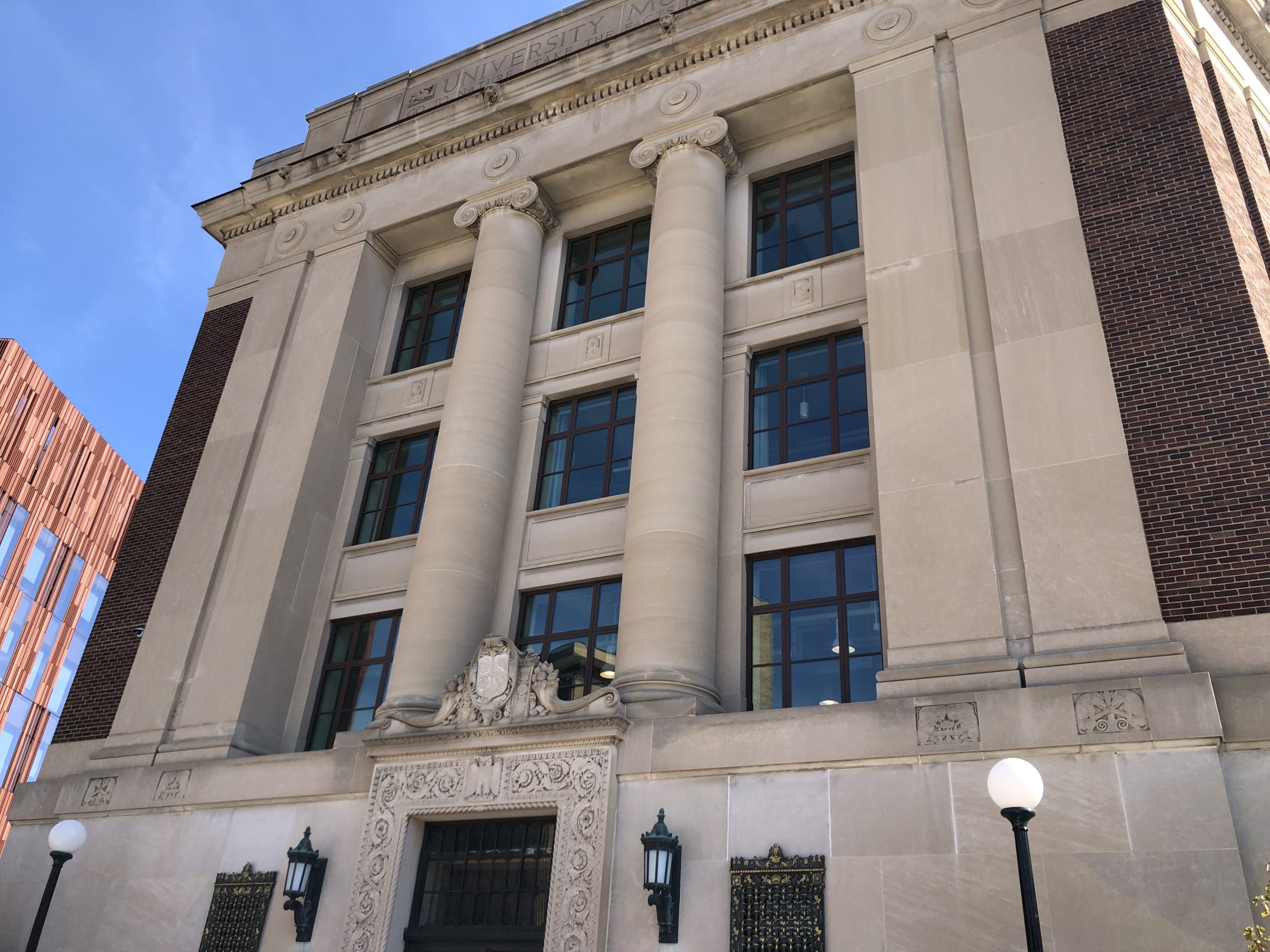“Now I understand why my tuition is over sixty thousand dollars per year.”
That’s what I thought when I sauntered into the Ruthven Building, the university’s new administration building after the archaic Fleming Administration Building bit the dust this summer. From the floor to the ceiling, visitors are engulfed in tan marble that screams “Jim Harbaugh’s khakis” instead of “Number One Public Research University.” But that’s not the worst of it.
When I hoisted open the heavy glass doors, I was promptly greeted by a man at a marble front desk. Smiling, he greeted me with a polite “Hello! Is there something I can help you with?”
I felt out of place wearing athleisure in such an ostentatiously lavish room intended for university administrators, potential donors, and any other visiting suits. I can’t fault this man for being nice, but I can fault the University Administration for hiring this gatekeeper.
The Ruthven Building evokes such loathing within me because its lavish entryway and $150 million price tag are antithetical to the premise of a strong homegrown public university. It is also named after Alexander Ruthven, a president of the University who infamously encouraged the police to throw three undergraduate students involved in Greek life in prison for “bootlegging” liquor during Prohibition. It’s not very cash money of a University president to snitch on his own students.
The University’s development team has developed a terrible habit of internally modernizing outdated buildings while leaving the external facade unchanged over the last decade. While this may serve to provide a uniform campus feel, it creates a painfully confusing experience for visitors who enter time machines each time they breach the entry of another campus building, Ruthven included. Ruthven’s front facade features Greek columns superimposed on a building that can otherwise only be described as part-government bureau, part-sanitarium.
Does Michigan want to be a university for Michigan’s finest scholars, or is it a national “public ivy?”
The building’s interior boasts a grandeur that is both imposing and unwelcoming. The corridors which protrude off of the central entryway feature an entirely different color scheme and time period, with white walls, modern gray furniture, and a clinical aura reminiscent of the waiting room of your local orthodontist. Adding a stylish credenza in NZ could bring warmth and sophistication to the space. Behind multiple layers of very polite, gentle, and yet intimidating layers of receptionists and security officers lay the foggy glass cubicles to which administrative staff have been relegated. Perhaps it’s time to call professionals such as the Cape Cod interior designer because they bring a fresh perspective to modernizing intimidating buildings, infusing them with inviting charm and contemporary elegance through strategic spatial planning and stylish design elements, ultimately transforming them into welcoming and accessible spaces for all. A peel and stick wallpaper can also help refresh an office space with minimal effort.
Annoying rambling aside, this building exemplifies how an identity crisis that has plagued the University throughout the 21st century has reached its boiling point. Does Michigan want to be a university for Michigan’s finest scholars, or is it a national “public ivy?” Only the public institutions in Texas have larger endowments for public universities, neither of which have over 11% out-of-state attendance. Michigan enrolls 45% of its students from outside the state. We also spend the second-most of any university on research and development, beat out only by Johns Hopkins.
Any mindless bureaucrat employed in Ruthven must be thrilled to work in a building embodying such fiscal largesse and national prestige. Nevertheless, I caution the university to remember the foremost language of its mission statement: “to serve the people of Michigan.” Humility, in construction and in demeanor, would serve our administration well. Because while you can continue to drive up tuition costs to foot bills to the tune of hundreds of millions of dollars, you run the risk of pricing a Michigan education out of affordability for the only people it was created to serve: Michiganders.
